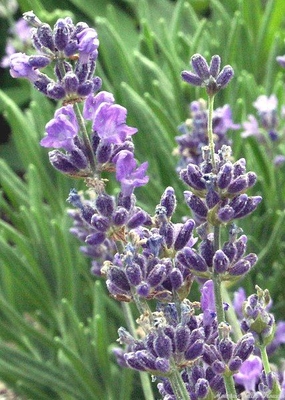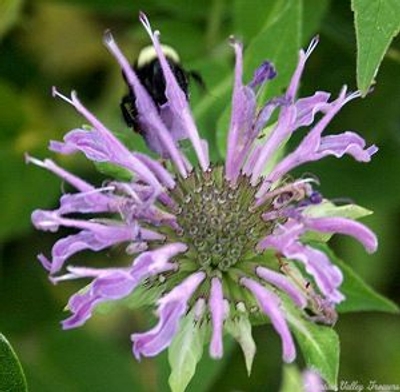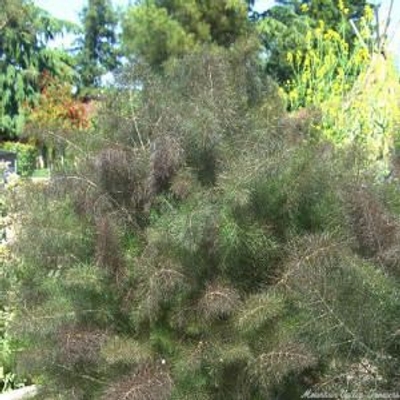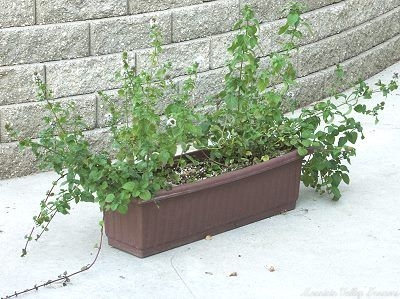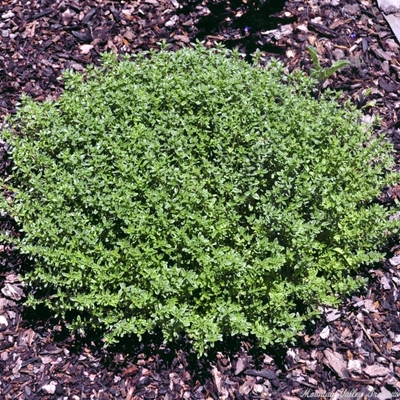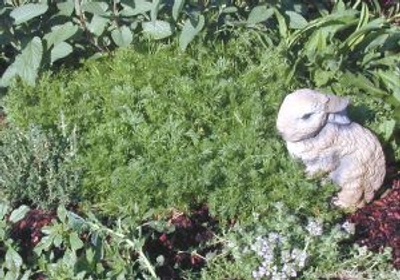Why we chose these plants
Tea is one of the simple pleasures of life, and growing your own tea herbs and learning to blend your own teas is fun and rewarding. While many herbal teas are chosen for their health benefits, these six herbs were chosen for their flavor. That they also happen to be good for you is just one more reason to explore the many facets of herbal tea plants.
Growing your own tea herbs gives you the satisfaction of knowing your brew was grown without chemicals, harvested at the peak of perfection, and preserved with minimal disturbance to the leaf, giving you a perfect cup of tea.
Herb teas can be brewed by pouring pure water brought just to the boil over fresh or dried herbs and letting them steep for between 3 and 5 minutes, or by adding them to a large glass jar filled with pure water and letting the sun do the work of infusing the herbs. The quantity of herbs to use will depend on the herbs and your taste. Start with a tablespoon of dried or two tablespoons of fresh herb per cup and adjust to taste. Use each herb independently at first to become familiar with its flavor. Then try two together and then three and so on. Take notes as you create your herbal masterpieces. The six herbs presented here can be blended with each other to make dozens of different combinations and can be enjoyed hot or iced.
The tea herbs chosen for this garden are hardy enough to return each year in Zones 5 -11, providing years of herbal tea harvests.
Roman Chamomile
Roman Chamomile is a soft, aromatic herb that spreads by runners on top of the ground. It needs consistent moisture and about six hours of sun a day. It can grow to ten inches or more when in bloom. Flowers should be harvested for tea when fully open and can be dried or used fresh. Chamomile tea is a light, flavorful tea similar to green tea. Roman Chamomil tea soothes and relaxes. It also blends well with Apple Mint, Lemon Balm, and is particularly nice with just a touch of Lavender added. Or, try Grandma Palmer’s remedy for a rough day and stir in a tablespoon of brandy with a touch of honey.
Note that those who are allergic to ragweed pollen may also be allergic to Chamomile. As with any new herb, try a small amount first.
Bronze Fennel
Bronze Fennel adds a lacy, coppery accent to the garden that invites more exploration. It is easy to see how it found its way into the tea pot. Full sun will help Bronze Fennel to develop rich oils scented of licorice. Both the leaves and seeds can be used for tea. Leaves can be harvested until the plant’s seeds start to ripen and, since they are more delicate in flavor than the seeds, they should be used fresh.
Since the seeds have a tendency to unexpectedly pop and drop to the ground, cut off the whole seed head when the seeds start to turn from green to brown, and allow it to finish the ripening process in a brown paper bag.
Fennel blends well with Rosemary for a quick afternoon pick-me-up. It has a sweetness to it that makes it a good addition to other, more bitter teas. When using the seeds, it is best to crush them lightly before brewing.
Sarah English Lavender
The English Lavenders have the sweetest flavor and make the best culinary or, in this case, tea herbs. Sarah English Lavender is a small plant that packs a big flavor punch. It makes a fragrant addition to the garden or to the patio when planted in a container.
Both the leaves and the flowers may be used either dried or fresh to make tea. Lavender packs a big, flavorful punch so add it sparingly at first. Flower stems should be harvested as the first buds open at the top. If using fresh Lavender buds, be sure to remove the bud from its holder (or calyx) because this part is bitter. The bud naturally falls away from the calyx when it is dried. Add a teaspoon of fresh Lavender to Rosemary, Lemon Balm, or Sage tea for an invigorating change. Because each Lavender has its own flavor, try blending several kinds together for a truly unique cup of tea. Make an extra cup of Lavender tea and add it to the bath for a luxurious spa treatment; just be sure to strain the leaves out first.
Oswego Tea (Bee Balm)
Native to the eastern United States, Oswego Tea was a welcome addition to the tea chest for tea drinkers during the Boston Tea Party. Its deep, rich flavor gave the robust body to herbal tea that was needed to mimic what people were used to drinking, China Tea. Oswego Tea is also known as Bee Balm.
A riot of color in spring, it should be pruned back to about an inch above the ground right after flowering. This will ensure a vigorous fragrant crop of leaves for harvesting and drying before winter frosts knock the plant back to the ground for its long dormant rest. Oswego Tea leaves are most flavorful when dried and the flowers are best when used fresh, but can be dried. Oswego Tea can be added to Black tea for an Earl Grey flavor, or blended with any citrus-flavored herb for a morning eye-opener.
Orange Mint
Orange Mint is a voracious grower, which makes it perfect for a tea lover. Related to Peppermint, Orange Mint has rich glossy leaves that develop their oils best when they receive at least six hours of sun each day and enough water to keep them from wilting.
Mints grow in two ways, up for flowers and out for new growth. Orange Mint leaves are best if harvested before the plants go up for bloom or after it starts to grow outward after bloom. Cutting the flowers back early will help the plant to focus more on the outward growth. Mints should be grown in large containers with plenty of space to spread out across the top of the planter.
Orange Mint leaves can be used fresh or dried and make a relaxing cup of tea all by themselves. Added to any other herbal tea in small amounts, they impart a warming flavor. Try making an Orange Mint-infused honey to flavor other herbal teas. Simply empty honey from an 8-ounce jar into a saucepan and heat over low heat until soupy. Add 6 or 7 fresh Orange Mint leaves and stir gently; then pour the warmed honey back into the jar and seal. This makes a unique offering at any tea party. Orange Mint may be used in any recipe calling for Peppermint.
Pennsylvania Dutch Tea Thyme
Pennsylvania Dutch Tea Thyme is one of the larger members of the Thyme genus. Planted in full sun, it can reach 2 feet in height. Like all herbs used for culinary purposes, the leaves are most desirable when picked prior to or after bloom. After the Thyme has finished blooming, cut back the entire plant by a third. New growth will subsequently provide more perfect leaves for the tea cup.
Pennsylvania Dutch Tea Thyme has an almost black-tea flavor which makes it a good base for other herbal flavors. Or add a bit of honey and enjoy it all by itself.
Additional plants to consider
The plants listed here make excellent additions to this collection. Click through to read more about them or add them to your order.

